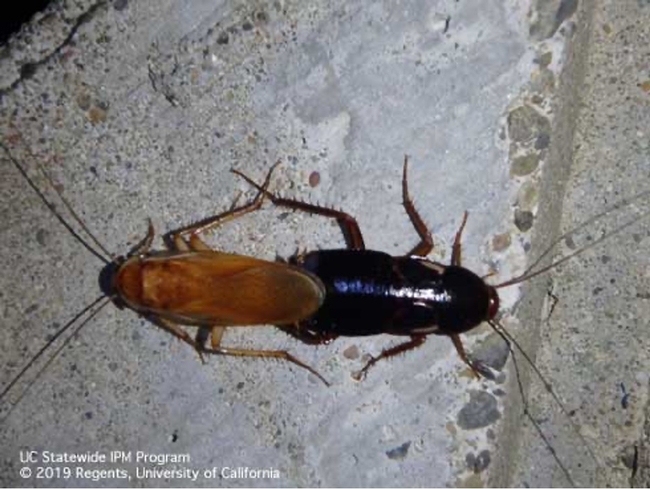Although all cockroaches in California are considered pests, the Turkestan cockroach is of particular concern. This cockroach has become increasingly common in California's residential outdoor areas because it has faster growth and higher reproduction rates compared to other cockroaches that live outdoors. Like other cockroaches, the Turkestan cockroach is considered both a nuisance and a public health issue.
What does the Turkestan cockroach look like?
Adult Turkestan cockroaches are about 1 inch in length. Females are slightly larger than males, dark-colored, flightless, and have distinct pale stripes right below their heads on their wing buds. Males are light brown with fully developed wings. Nymphs of the Turkestan cockroach have brown-reddish heads and dark brown bodies.
Where can you find Turkestan cockroaches?
Since these are outdoor cockroaches, they do not survive well indoors. Generally, they can be found in crevices in cement or rock walls, water meter boxes, outdoor drainage pipes, public drains, debris piles, and other dark, moist places.
What can you do about Turkestan cockroaches?
Use sticky traps or glue boards to detect and monitor cockroach populations. Securely store food and garbage, and limit excess moisture. Seal cracks and other openings to the outside and install door sweeps or weather stripping to prevent them from coming indoors. Pesticide baits can provide control, but pesticides alone will not solve a cockroach problem.
To learn more about Turkestan cockroaches, see the UC IPM Pest Notes: Cockroaches or visit this UC IPM page on Turkestan cockroaches.
